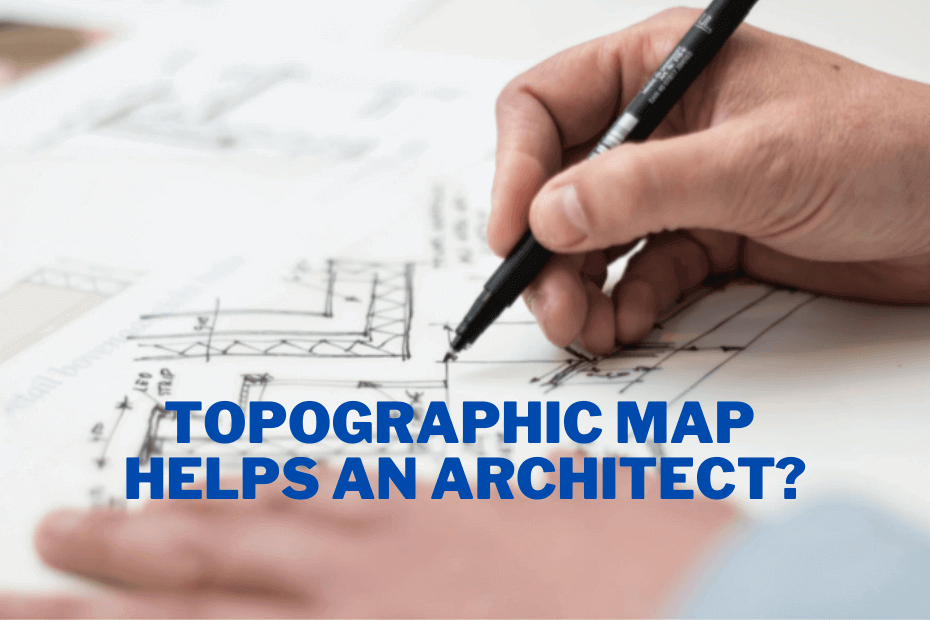A topographic map is an essential tool for any architect. They can use them to make sure that they are on the right track with their designs. The information in the map helps the architect identify any potential obstacles before they build or design something new.
The most notable change in architecture was probably when architect started designing houses with topography in mind.
This was made possible by advances in computer science and digital technology, which meant that many architects could create 3D models of their designs before even beginning construction work. This has led to an explosion of house design ideas worldwide, with more space being created.
This article will discuss how does a topographic map help an architect when building or designing a structure from scratch or remodelling an old structure.
What Is Topography In Architecture?
Topography is the study and understanding of the earth and its natural features used in the design of terrain, landforms, and structures.
Topographical features such as valleys, ridges, ravines, hillsides, mountainsides, and plains occur naturally on Earth’s surface. They are formed by geological processes such as erosion or deposition.
What Is A Topographical Map?
Topographical maps provide information about the surface of the Earth. They also help in showing, understanding and analyzing different geographical features such as rivers, mountains, forests and cities.
The topography of a map is important because it gives clues about what is represented on that map.
For example, a relief map will show the height changes on the Earth’s surface whereas a geologic map will focus on geological features such as mountains or cliffs.
Why Topographic Map Is Important For Architects?
A topographic map is a specialized map used by geologists, surveyors, and construction workers to depict relief (hills and mountains) of the Earth’s surface with contour lines (lines depicting constant elevation).
The contour lines on these maps represent the elevation of nearby places; they are usually spaced at intervals that differ depending on the scale of the map being used.
Topography is important to architecture because it helps in achieving the desired look and feel for a building’s design. Architects use topography to create interesting designs with natural shapes rather than straight lines or geometric shapes.
How Does Topography Affect Architecture?
Topography is used to describe everything concerning terrain, including the earth’s surface and soil, climate, and soil conditions.
Topography can affect architecture in many ways.
- One of them is by influencing natural materials used for construction (e.g., rock).
- Another one is by influencing how architects decide on how to design their buildings since they can choose where they want to build it on the land-based on the topography.
- Topography also determines how patterns in landforms are created because it dictates how erosion occurs or water flows through a region at different rates.
- Topographic Map helps Architects for cost estimation.
There are a number of social, political, environmental factors that affect architecture in many ways.
Factors that have an effect on architecture include lifestyle changes, economic issues, technology advancements and culture.
How Does Topography Affect Building Design?
Topography affects the design of a building. It is very important to assess the topography of a site before planning for a new building.
In current day society, we have been witnessing an increase in construction on sites with difficult topographic conditions. These include sloping areas and steep slopes. This would require a larger construction team to complete the work on time and within budget.
Even the topography of the area in which your building is located can affect its design.
The shape of a hilltop, for example, will make it difficult for anyone to build a tall building since the land would be uneven and individual floors wouldn’t be able to support the weight of the entire building.
Why Topographic Surveying Is Important For Architects?
Topographic surveying is the process of measuring the elevation or variation in surface elevation from point to point on Earth’s surface, usually using trigonometric methods.
This survey data can be used by architects and engineers during the planning and design phases of construction projects.
Architects need to know the features of a site in order to design a building. It is important for them to have a thorough understanding of topography, as well as to develop an assortment of surveying instruments.
Architects use topographic surveying tools such as total stations and laser scanners for finding and measuring points on Earth’s surface that are difficult or impossible to reach.
This information can then be used in architectural drawing software such as AutoCAD or 3D modeling software where points are accurately located.
Importance of Topography & Soil Condition
The topography and soil condition of a place is one of the most important factors when planning an architecturally significant building.
There are several concerns that architects should take into account before planning out their design. The topography and soil condition should always be taken into account before the construction, to ensure that it will be able to withstand the elements and provide a healthy living environment for inhabitants.
Summary – How Does A Topographic Map Help An Architect?
Maps are an important tool for architects to use in their work. They allow architects to take design ideas and map them out before building the structure.
Maps can help architects take notes on-site, explore different floor plans, and examine the aesthetic of the building before committing to it.
These Topographical maps are important to architects because they can use them to plan building layouts and constructions.
